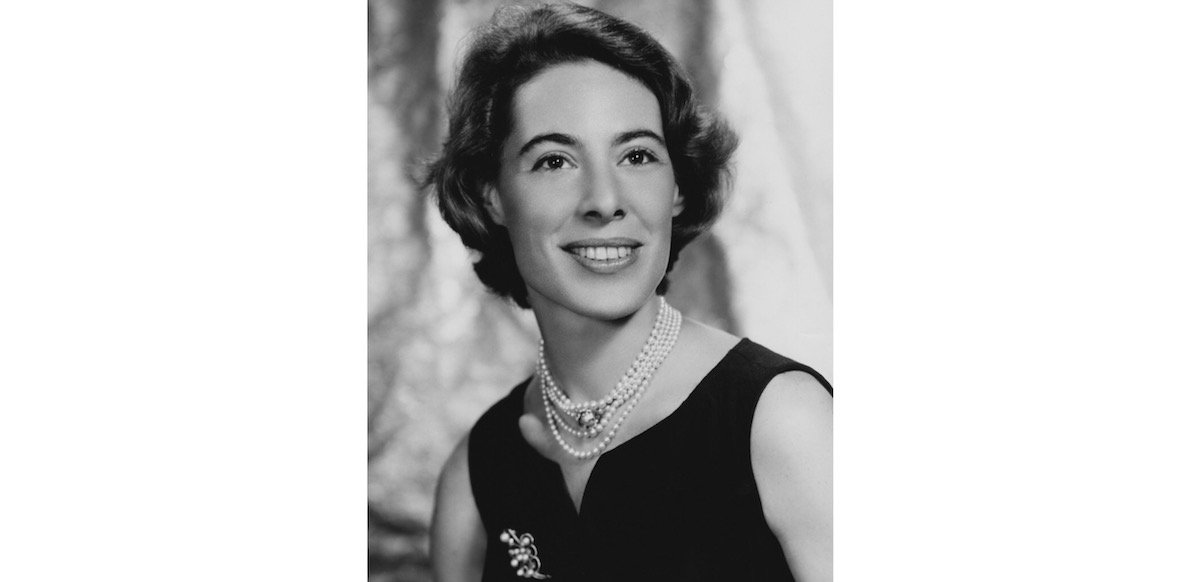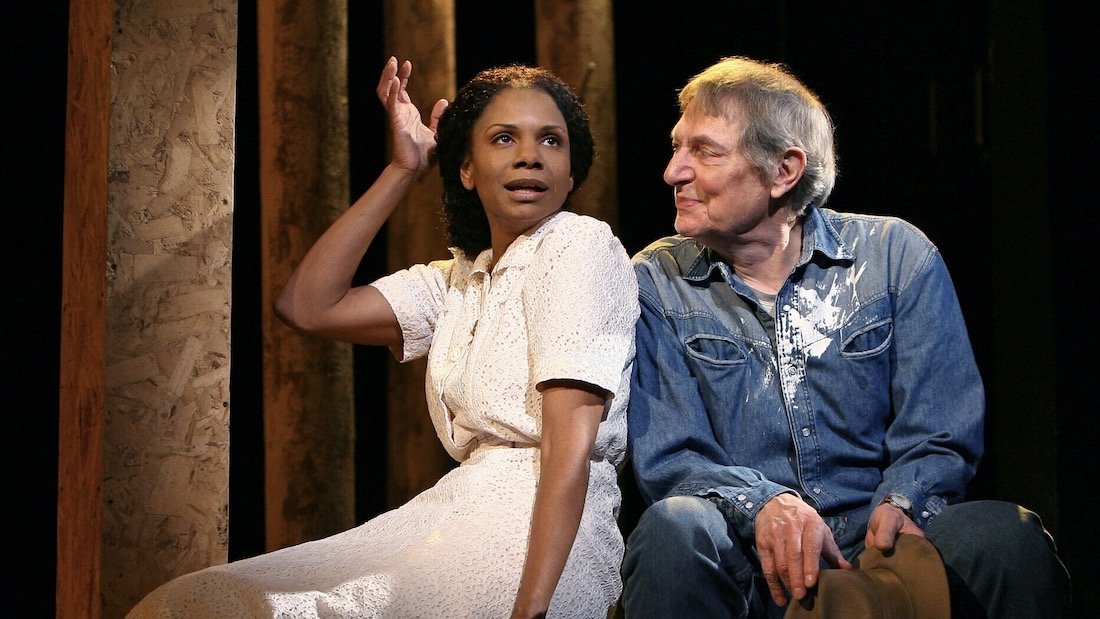
Consider for a moment the America of Mary Rodgers’ childhood. Jazz crooners on the radio broke up the monotony of dour news reports of unemployment and food shortage. The Great Depression cast its inky shadow over all facets of daily life. Homemakers struggled to achieve some level of pleasant equilibrium for their families. Life was dictated by the strict social binary that men’s place was at the office or the factory, and women’s place was in the home.
But the Rodgers family tradition was one of unique accomplishment. Her father, composer Richard Rodgers was doing fine, even if he had to venture to Hollywood when Broadway all but dried up. And her mother Dorothy was an inventor, designer and author. How could Mary not continue the tradition? And indeed, she did. Her first Broadway show was a smash; her first children’s book Freaky Friday flew off the shelves. It seemed that no matter the endeavor, success was Mary Rodgers’ constant companion.
Her early experience of composing music came from missed notes at piano lessons. The mistakes she made sounded better to her than what was scored on the page. She would tinker with chord progressions and melodies and the patented Rodgers musical gene kicked in. Soon she was practicing her craft by scoring hymns and victory songs for school. The all-women row crew at her alma mater Wellesley glided over the Charles River to the driving tune of a Mary Rodgers original: “One, two, three, four, what are we for?”
By her own admission, Mary’s upbringing was comfortable but never opulent. She often referred to herself as rebellious and perpetually straining to flee her childhood home. At fourteen, that taste of freedom came from an apprenticeship at Westport Playhouse, where she met the teenage Stephen Sondheim. Years later, Sondheim would draw inspiration from their friendship and their struggles as young writers in “Opening Doors” from Merrily We Roll Along.
On the subject of establishing oneself as a writer, Mary offered this advice: “The only strategy I can think of to help you realize your talents – and I tell people this all the time – is to be pushy. Send off the letter to that producer, and say, ‘You don’t know me from Adam, but do you have any available job? I’ll do anything.’ You have to be very inventive and very aggressive, and if you don’t have the personality for that, then find a different way to deal with your life.”
Mary’s inventive aggression and talent would eventually reap its rewards. She was hired to write music and lyrics for Little Golden Records, where she met her future collaborator, Marshall Barer. They went on to write novelty shows and revues at the Tamiment Resort in the Poconos. The management approached Marshall and Mary to write a full-length piece “if they had a good idea.” Their good idea was a musical adaptation of “The Princess and the Pea,” which would eventually become Once Upon A Mattress.
Early in the writing process of Once Upon A Mattress, Mary consulted her father regarding some musical ideas for the score. “I wouldn’t have done it like that,” he said of a particular flourish in the bridge. From that moment, she realized that her musical voice needed to be just that: her own. Not to say that she was uninterested in his opinion of her work, but if she wanted to establish herself as Mary Rodgers (rather than “Richard Rodgers’ daughter”), she would need to trust her own choices and never seek approval from anyone else.
Once Upon A Mattress, opened on Broadway in 1959 after an an off-Broadway run. It garnered two Tony Award nominations that season, including Best Musical. Another powerhouse contender in the category was Richard Rodgers and Oscar Hammerstein’s The Sound of Music, which won in a tie with Fiorello!. While the presence of two distinct Rodgers musicals on the Great White Way did stoke some friendly competition between the father and daughter, they were still supportive of one another, as always.
The score to Once Upon A Mattress is brassy, frisky and fun. It sounds as though it belongs in the Golden Age musical canon, yet it stands alone in its own category. Mary played with unique meter and extended harmonies, perhaps a trace of the early composing experiments of her childhood piano lessons. The jaunty “Shy” is a perfect example of her sense of humor dominating and elevating the piece. We can hear Mary’s razor-sharp wit each time Winnifred insists to her surrounding company that she is, in fact, shy – in triple forte.
Following her success with the musical theatre, Mary transitioned to writing children’s books. The shift occurred after the literature luminary Ursula Nordstrom of Harper & Row reached out to Stephen Sondheim to commission his talents for a children’s book. He declined but referred her to his close friend Mary, who accepted. By this point, Mary was the mother of five children, and the schedule of writing for Harper & Row allowed her to focus more time on her family.
For her first book, Freaky Friday, published by Harper & Row, Mary drew inspiration from her own past. The themes of a fraught mother/daughter relationship proved universal, and the book was an instant sensation. Within four years, Mary wrote the script to the film adaptation starring Jodie Foster and Barbara Harris. It would go on to be adapted for the screen three more times.
With her days of composing music behind her, Mary’s life was still dedicated to the arts in several ways. She always felt her proudest contribution to the theatre, however, was her son, Adam Guettel. At a young age, Adam’s musical talents were obvious to his mother, who in turn fostered and nurtured her son’s gifts. Adam’s impressive resume of composing credits include Floyd Collins, The Light in the Piazza (Tony Award, Best Original Score) and Myths & Hymns.
Mary served as the Chairman of the Board of Directors at Julliard in New York City from 1994 to 2001, simultaneously serving as the family liaison of the Rodgers and Hammerstein Organization – a position she took after the death of her mother in 1992. There she oversaw productions of her father’s musicals as well as her own.
When attending any concert or a production featuring a Richard Rodgers score, Mary was keenly attuned to the music. If they played too slow, or held a fermata for an increment too long, she knew it. At a reading for a starry adaptation of Pal Joey, the chord progression was changed for the well-known Rodgers and Hart ballad “Bewitched.” At the end of the reading, Mary approached the music director and asked who made the changes. When he confessed to the creative alterations, her response was gracious but characteristically blunt: “Don’t.”
Mary Rodgers’ creative voice and legacy stand as a singular reminder that tenacity and talent can achieve the remarkable. Speaking of her life as a woman composer, Mary once remarked, “When I was growing up, there were no role models for me… It seems to me you have to just know yourself very well and figure out what you want to do with your life, and then go out and find the people who seem to be doing it or find the people who can help you do it.”
As we celebrate the contributions of women in t
he theatre, it is right to remember Mary Rodgers for the doors she opened to a new generation of writers and actors. She arduously swam against the current of social expectations and established herself as one of the truly great musical voices of our time. When she passed away in 2014 at the age of 83, R&H Theatricals was overwhelmed with condolences and stories from theatre lovers all over the globe, of this person’s first production of Once Upon A Mattress, or how that person met their wife when she played Winnifred. The list goes on.
Mary was the first woman composer whose work was nominated for a Tony Award for Best Musical. This paved the way for Lucy Simon of The Secret Garden, Jeanine Tesori of Fun Home, Irene Sankoff of Come From Away, Anaïs Mitchell of Hadestown, and others.
We remember Mary Rodgers as an elegant raconteur of exquisite taste and infinite humor.
…
For more about Mary Rodgers and other musical theatre composers, visit the Concord Theatricals website in the US or UK.

Plays that Inspired Musicals

QUIZ: Which Character from The Lightning Thief Are You?


